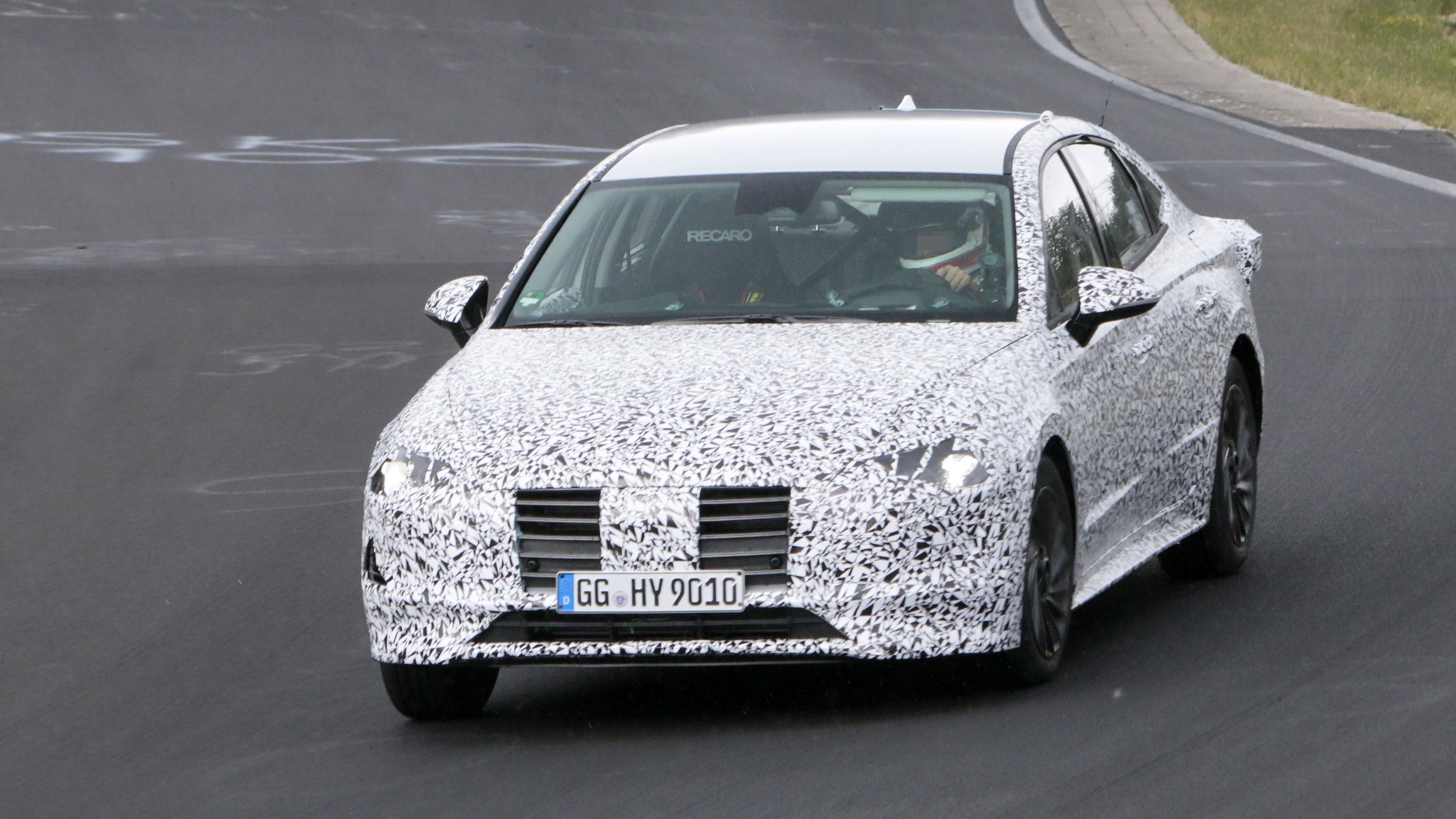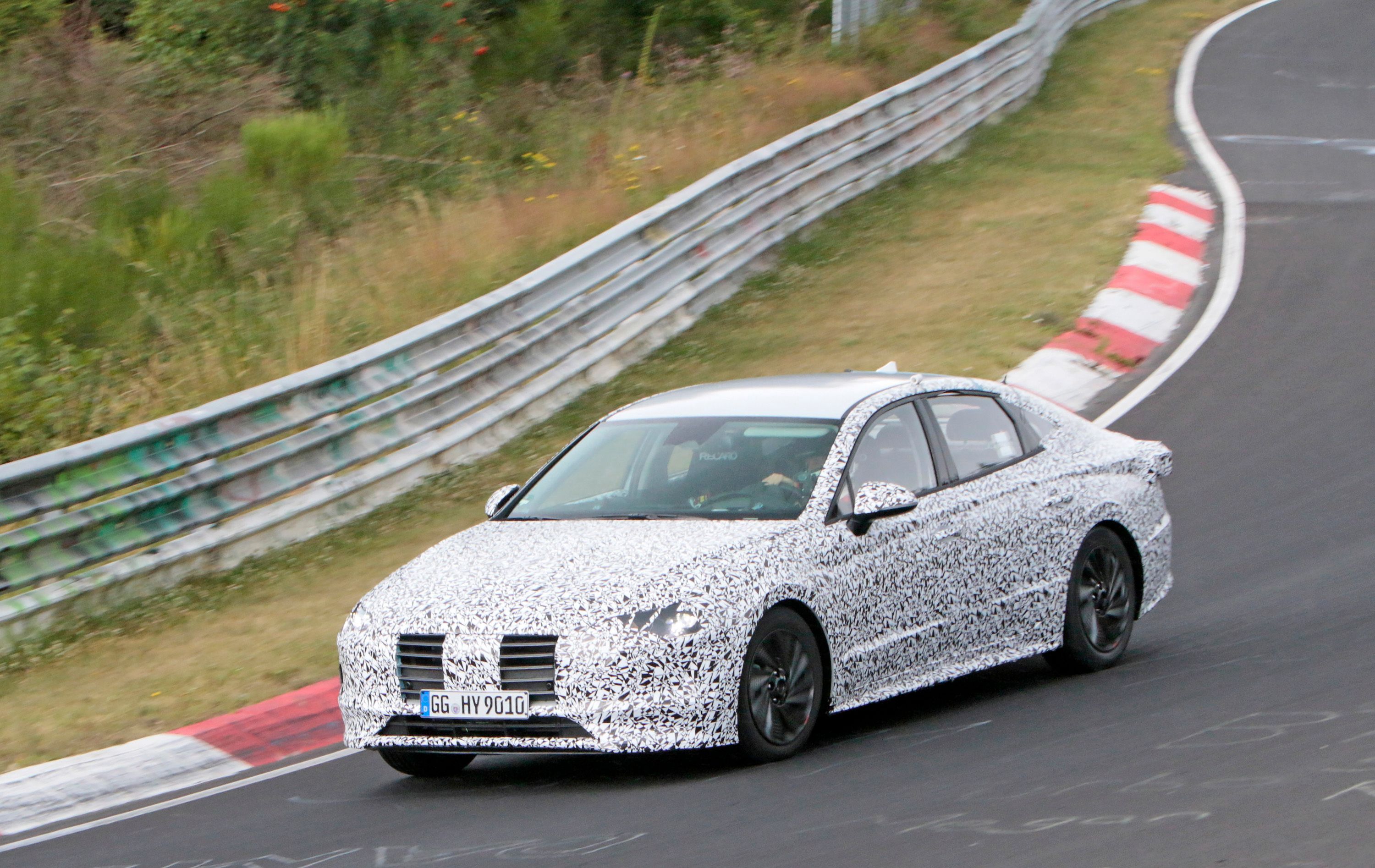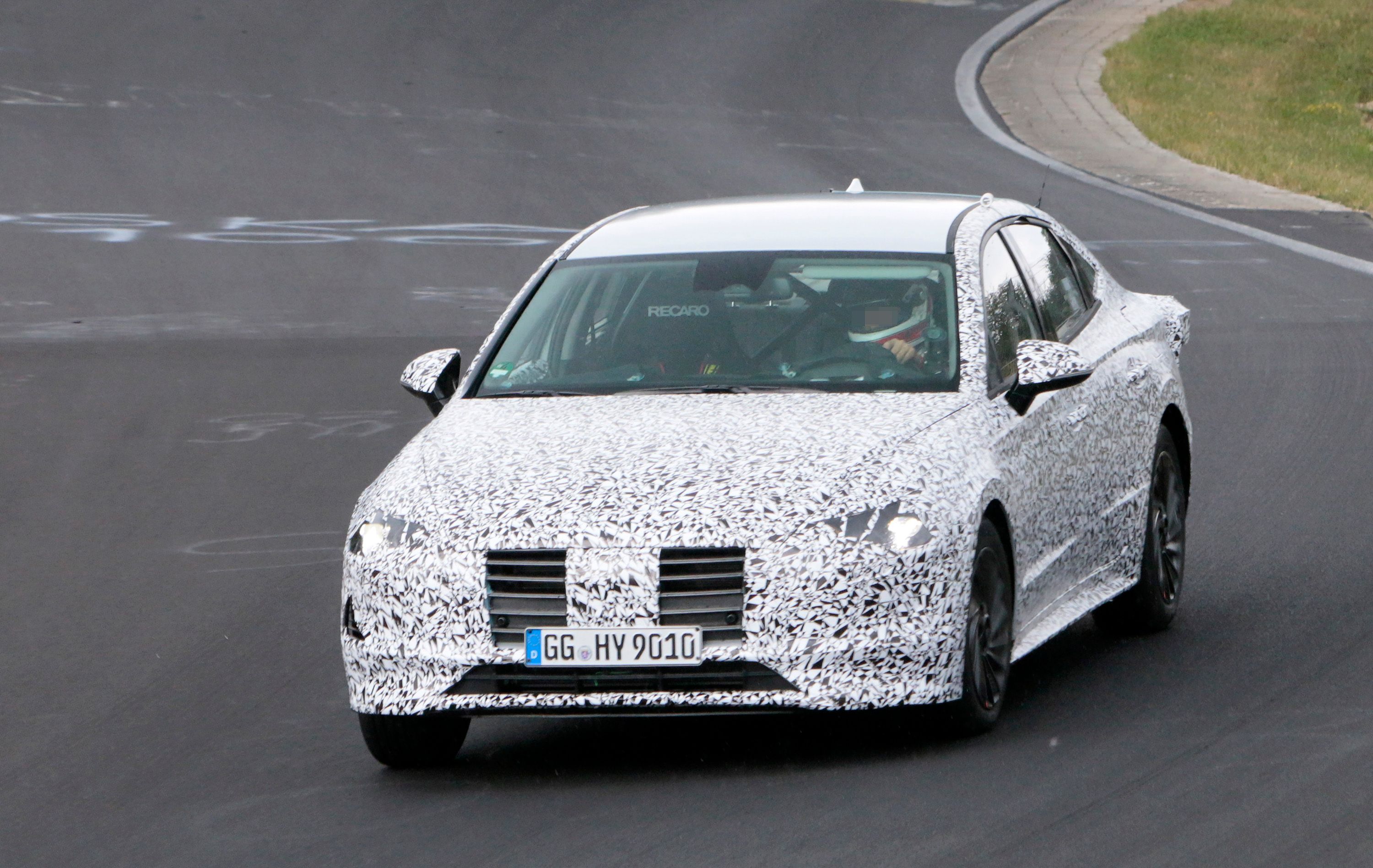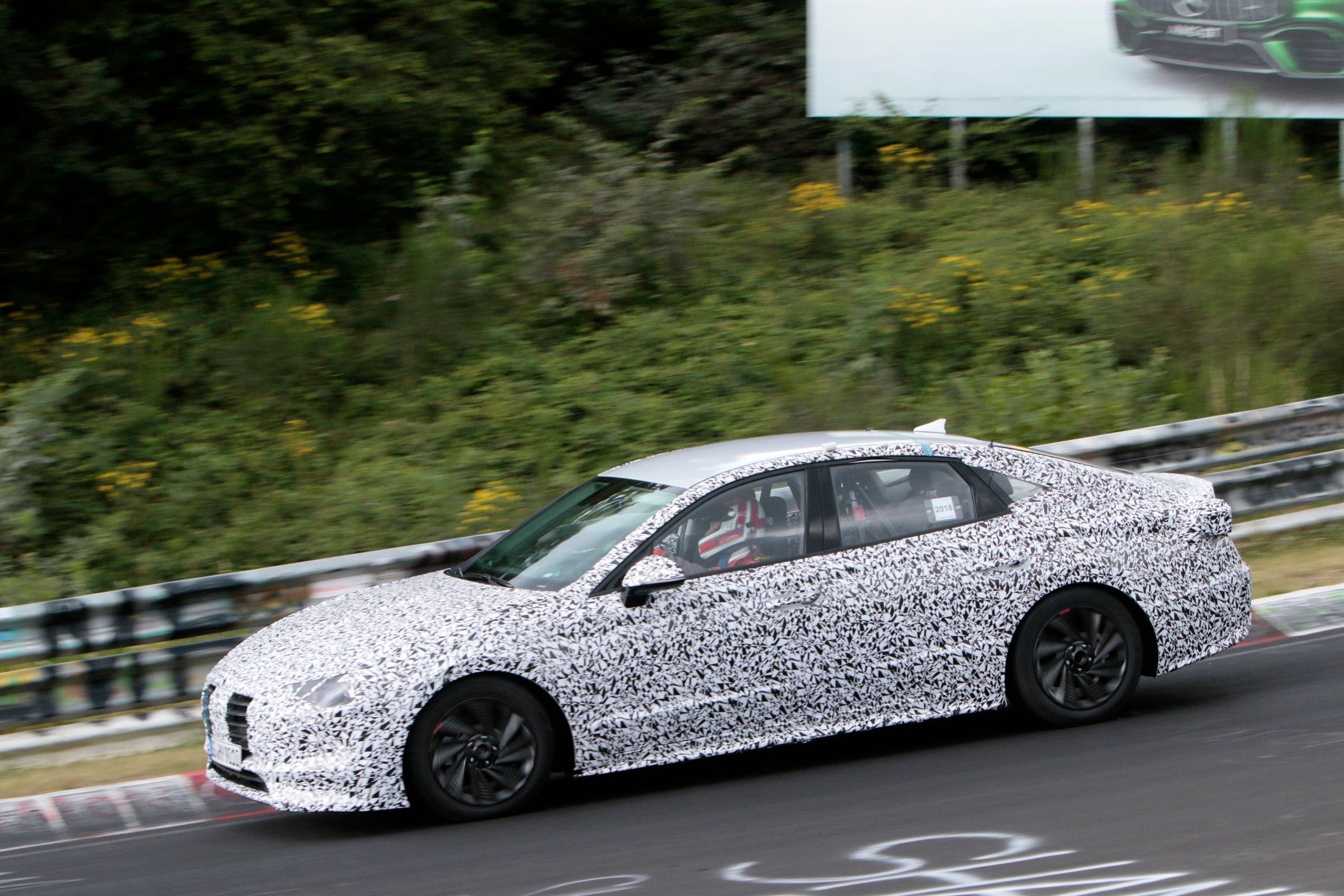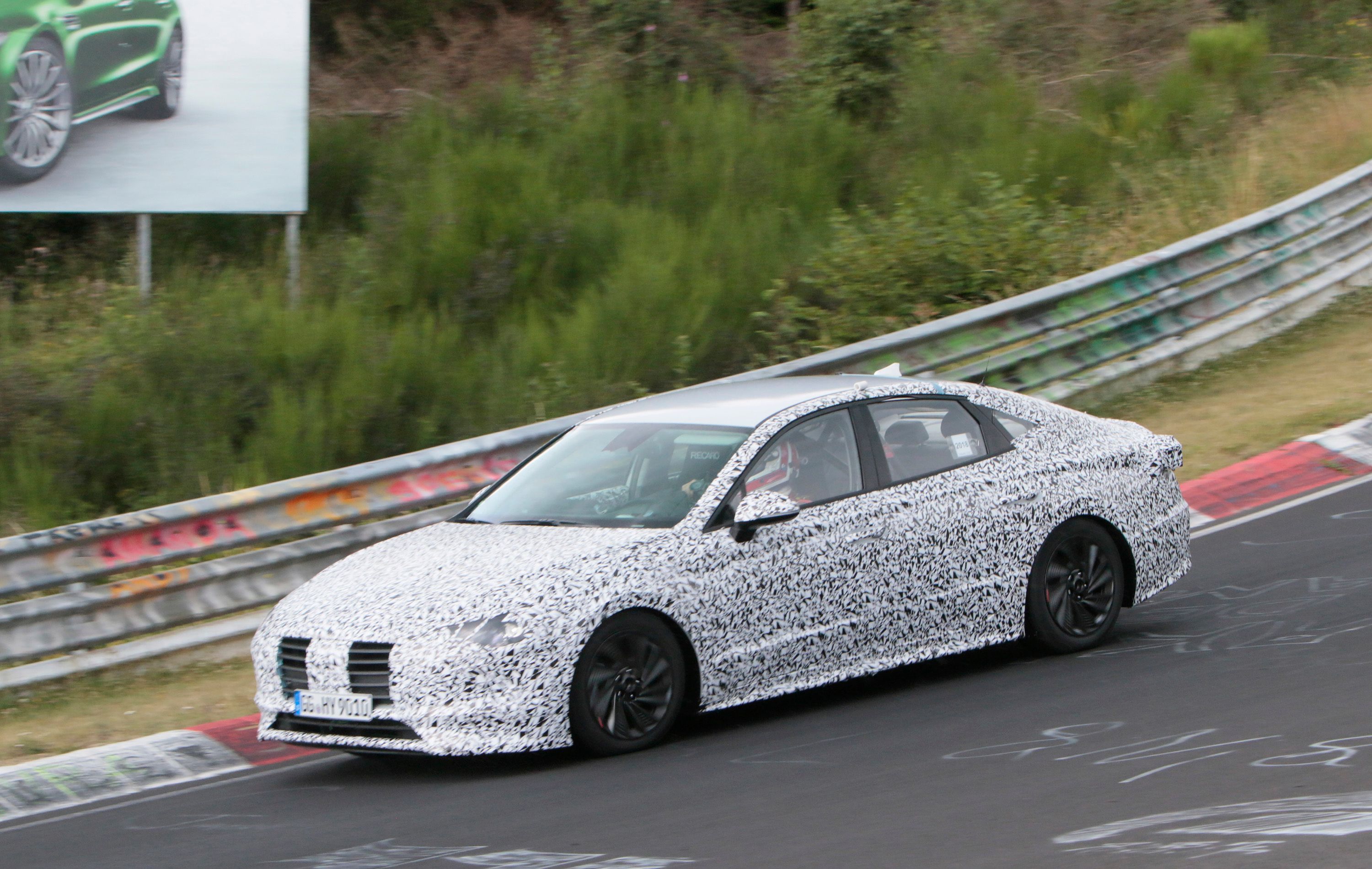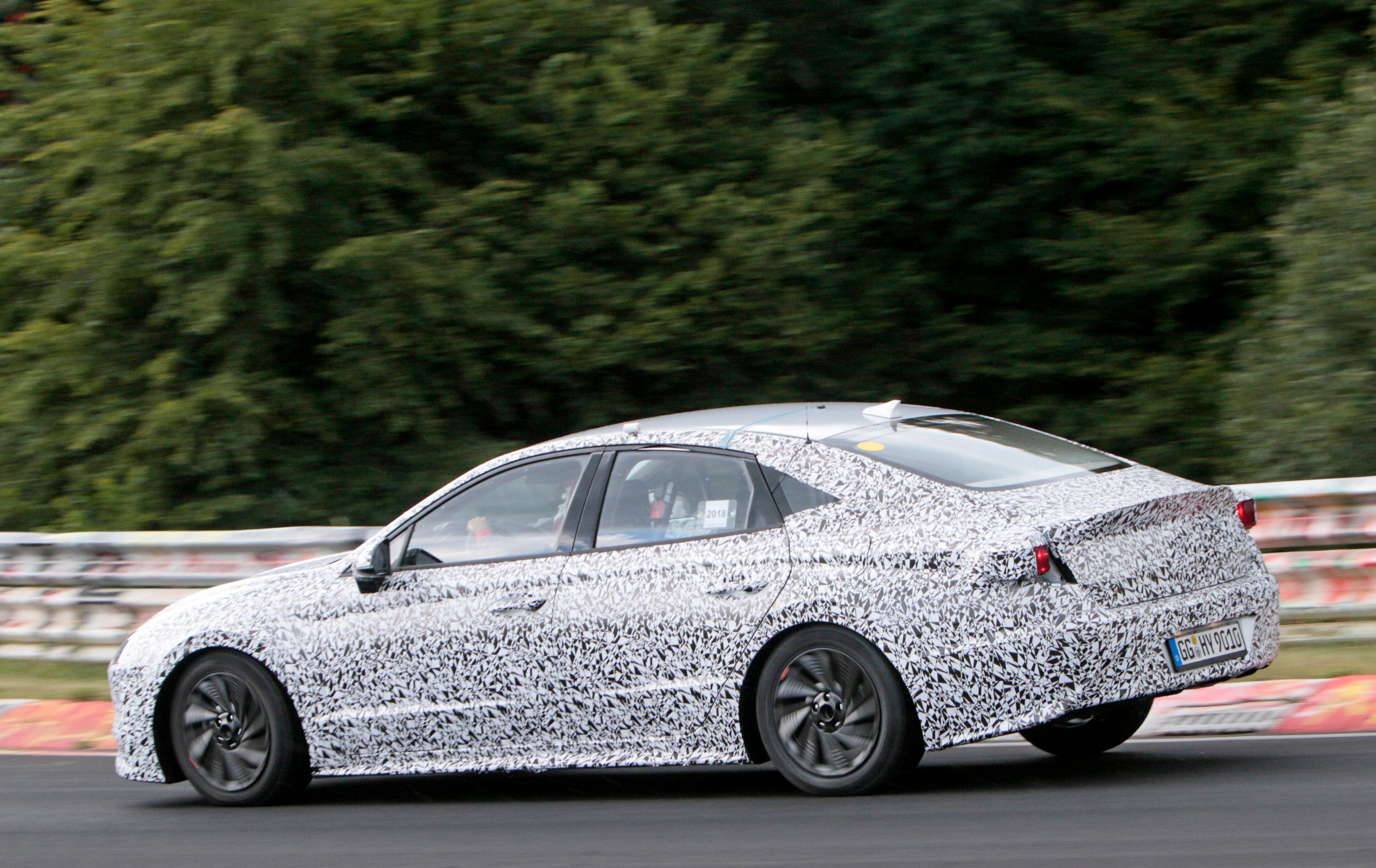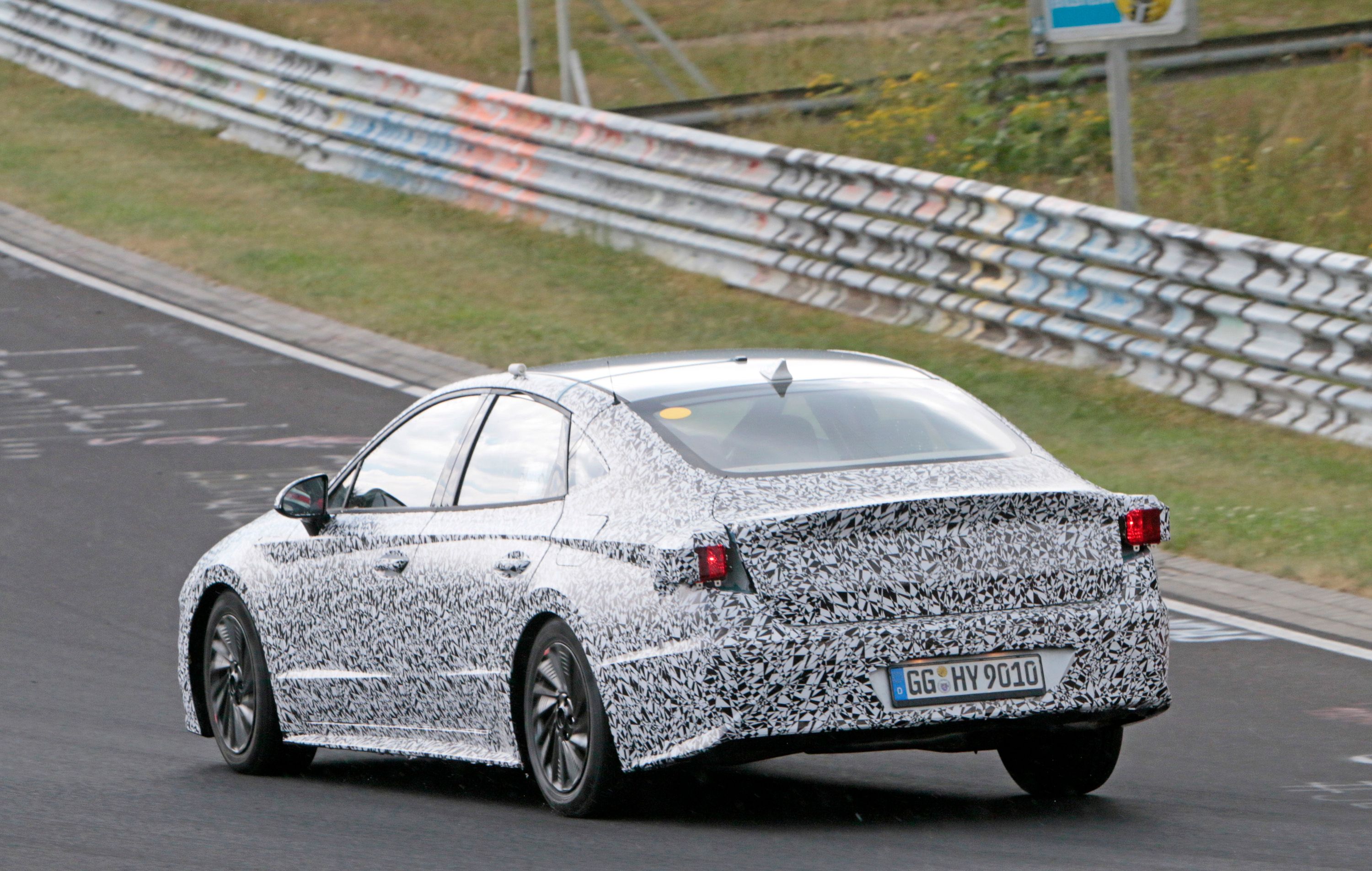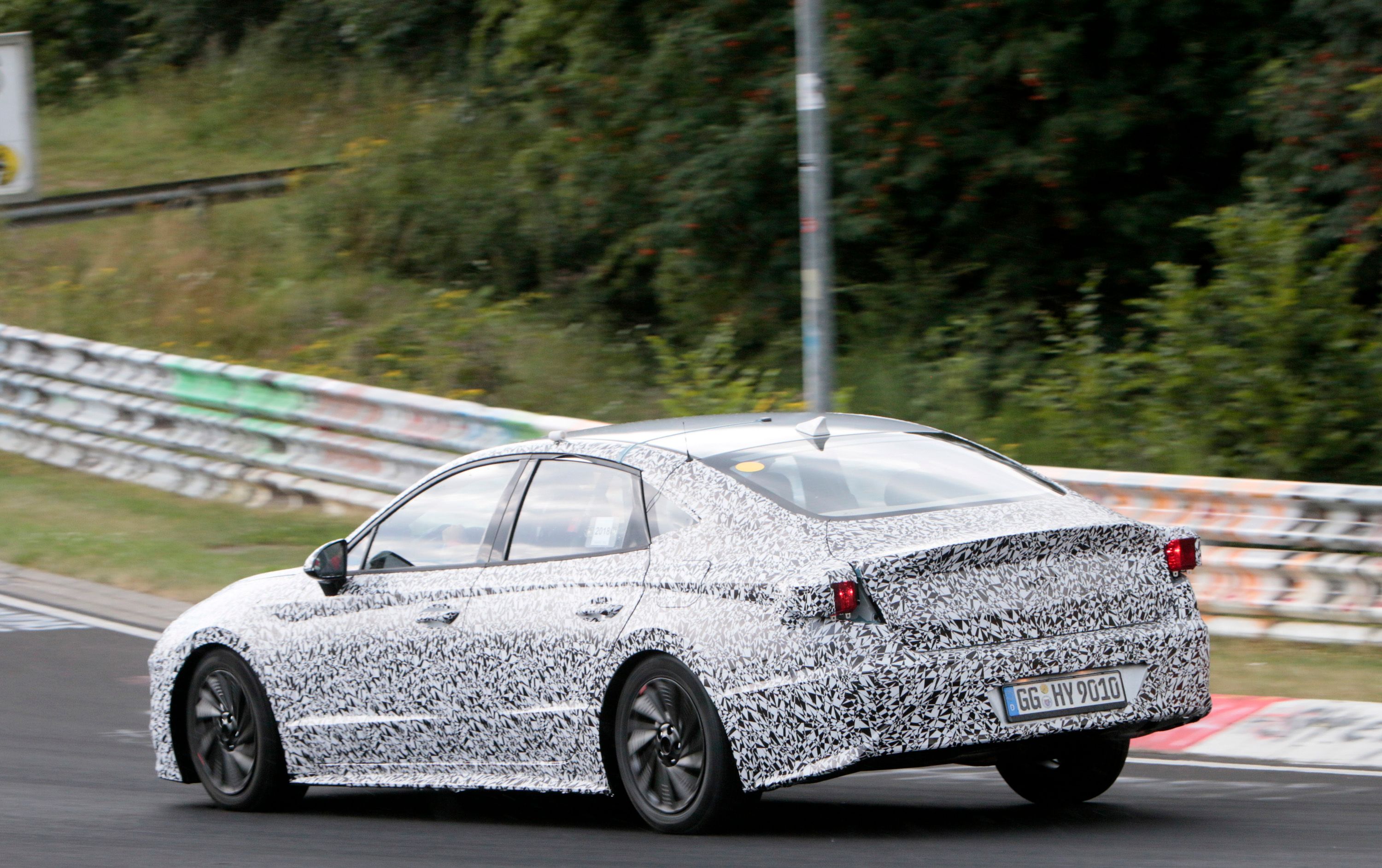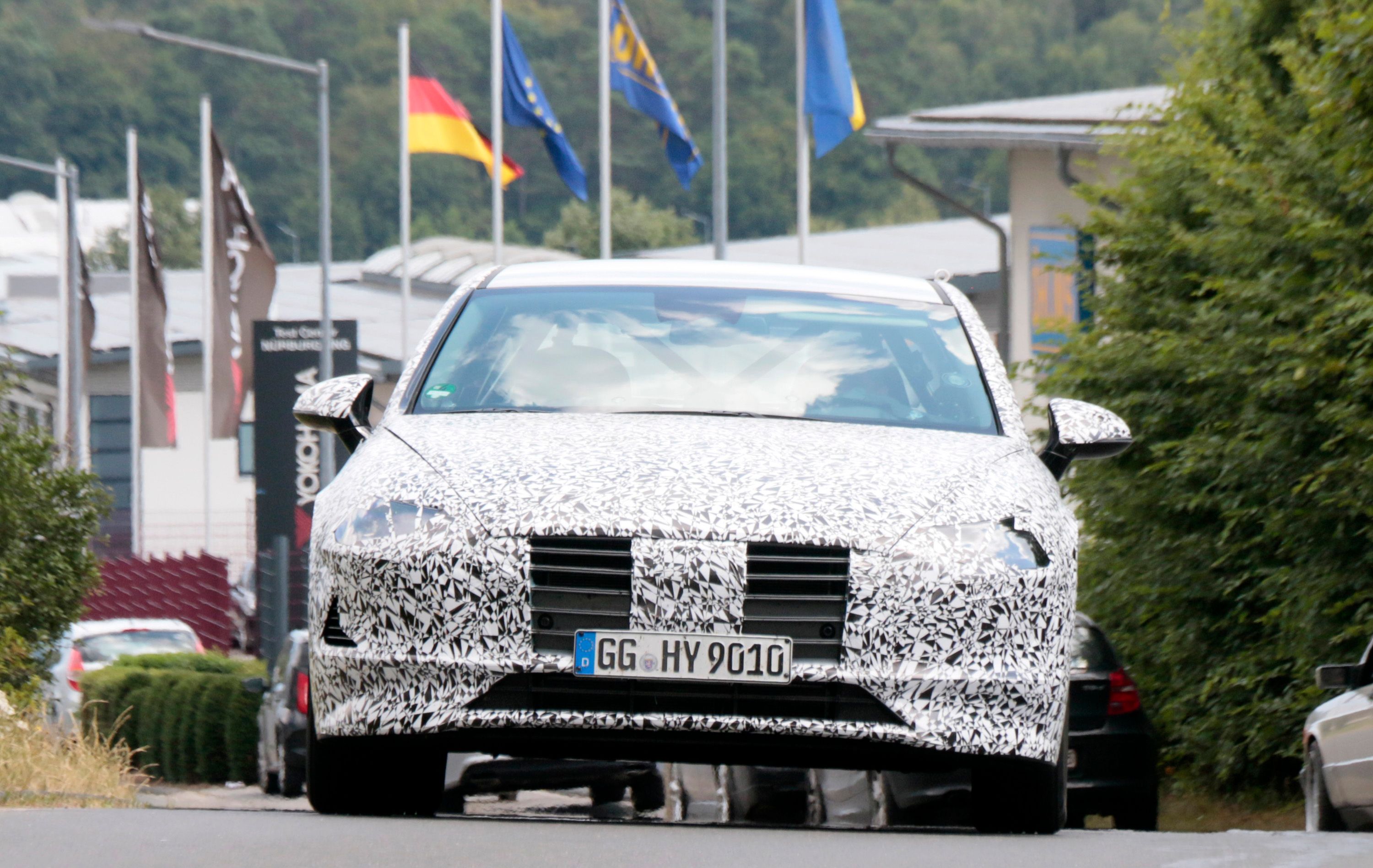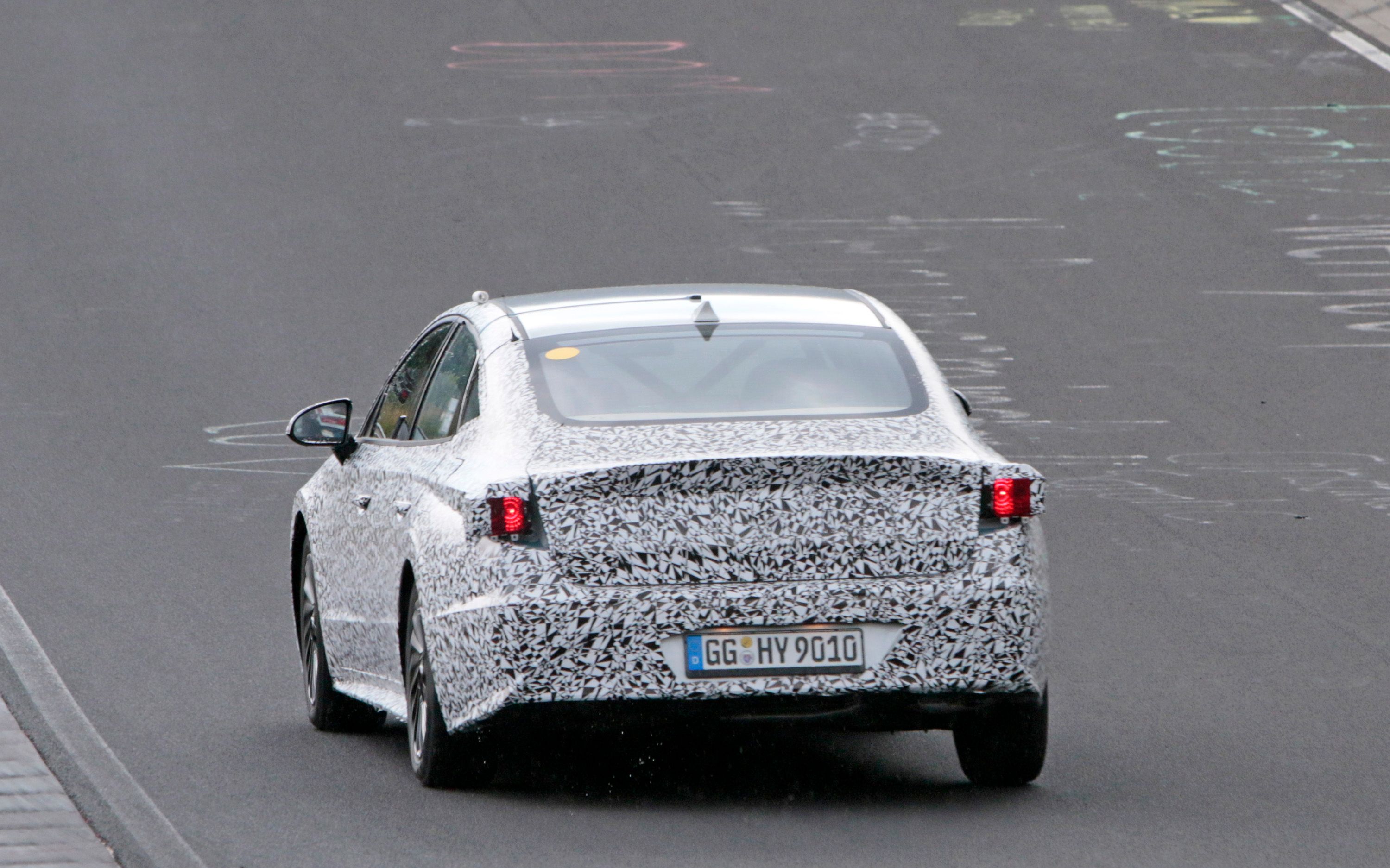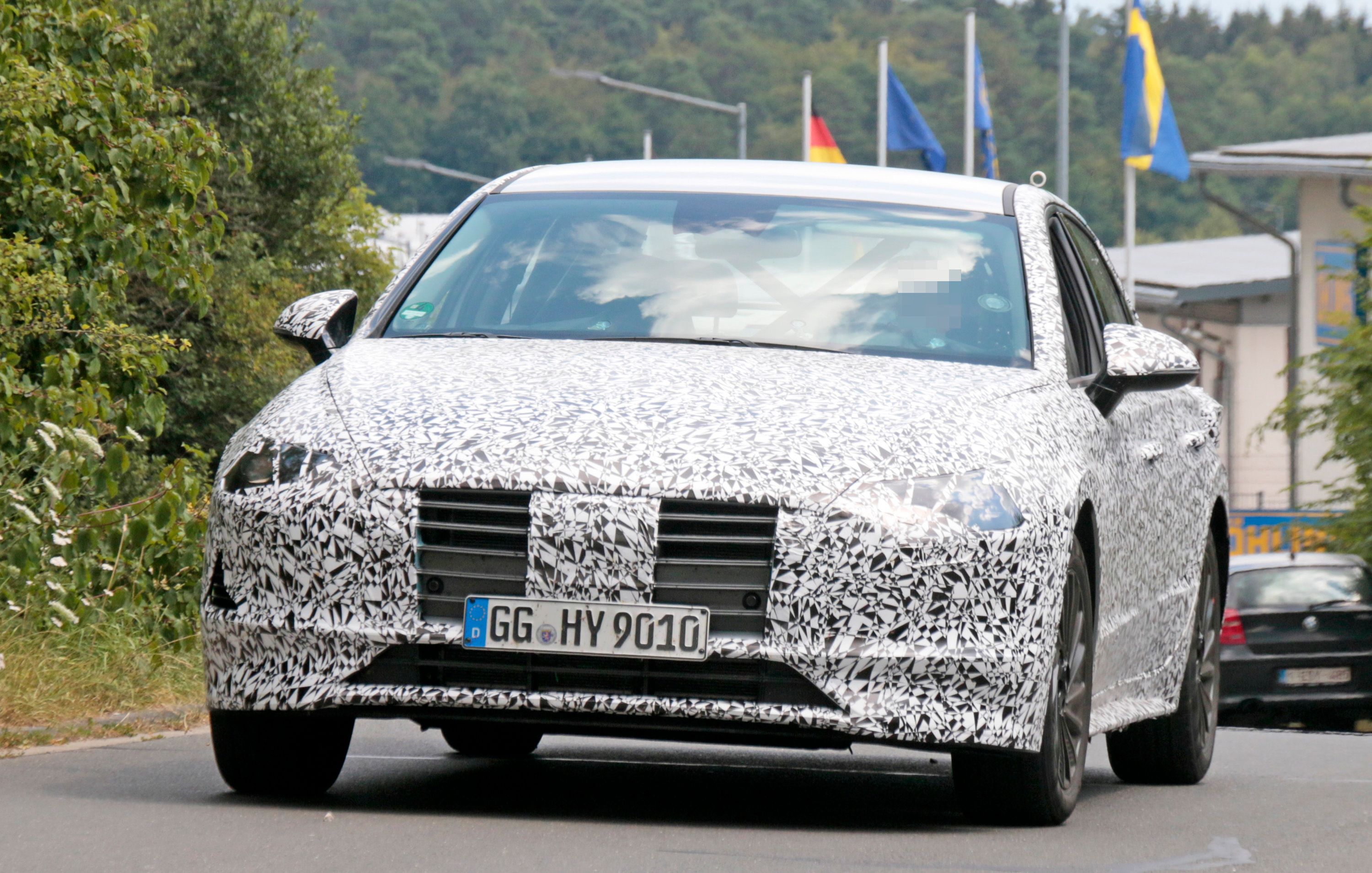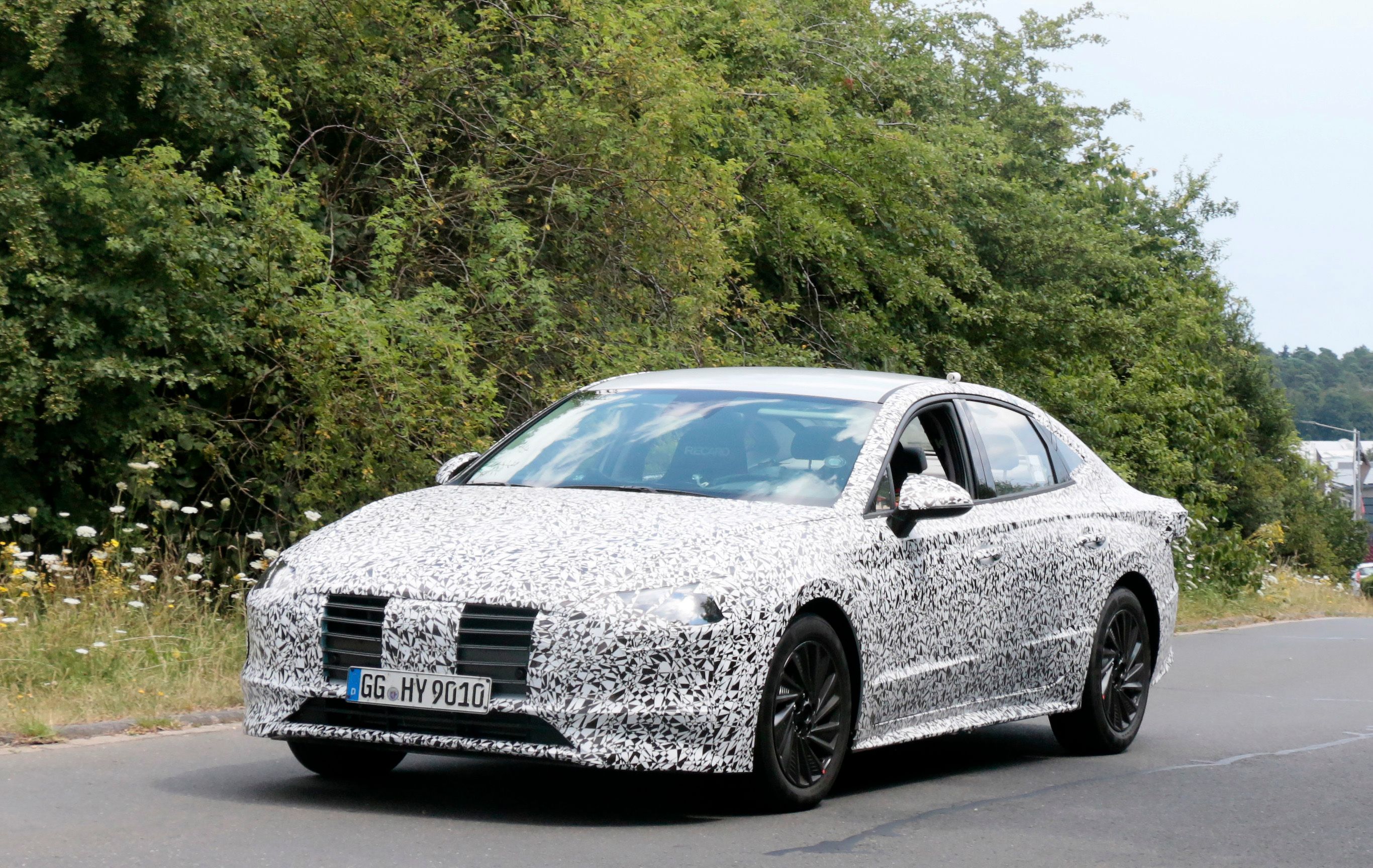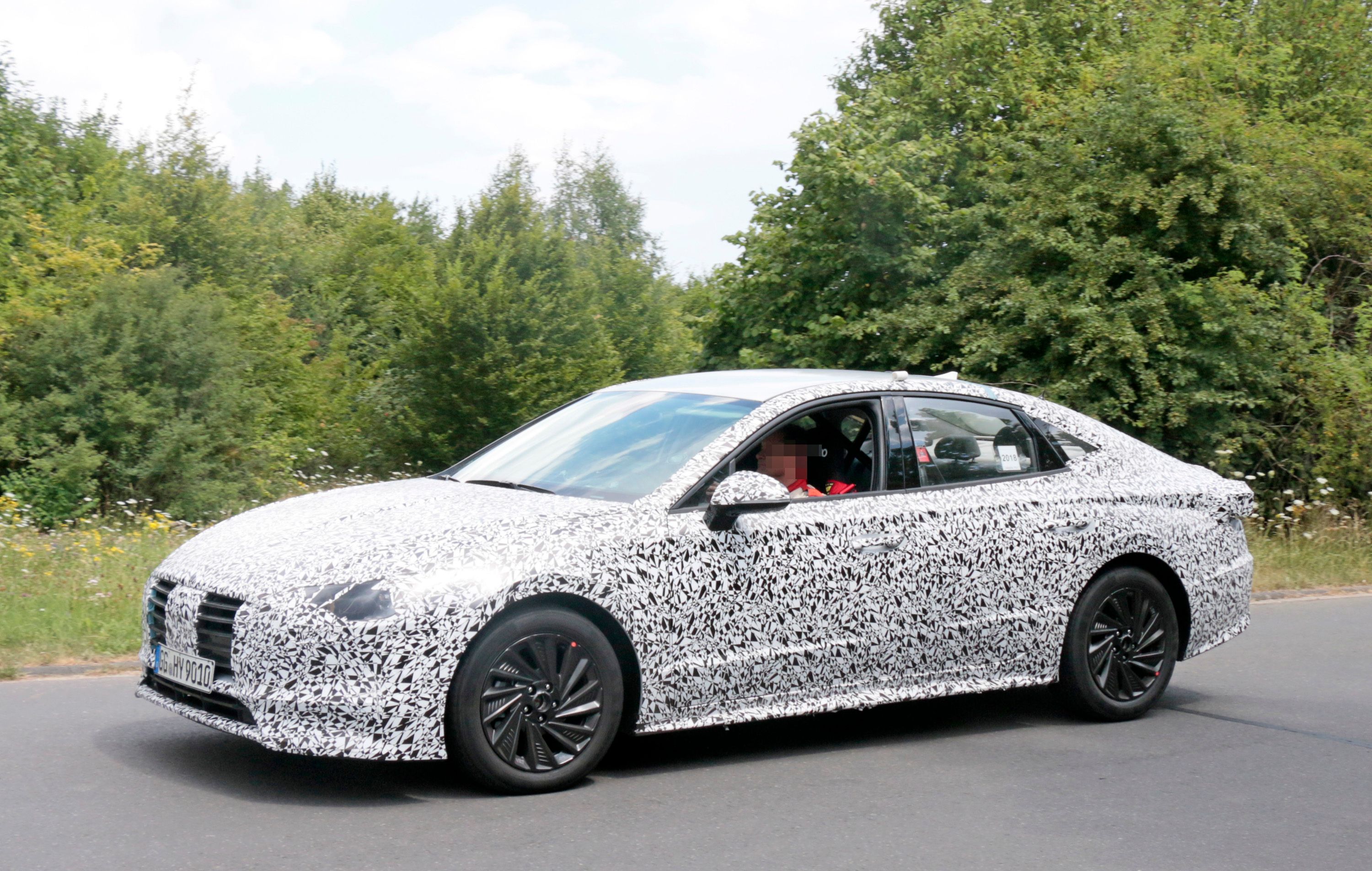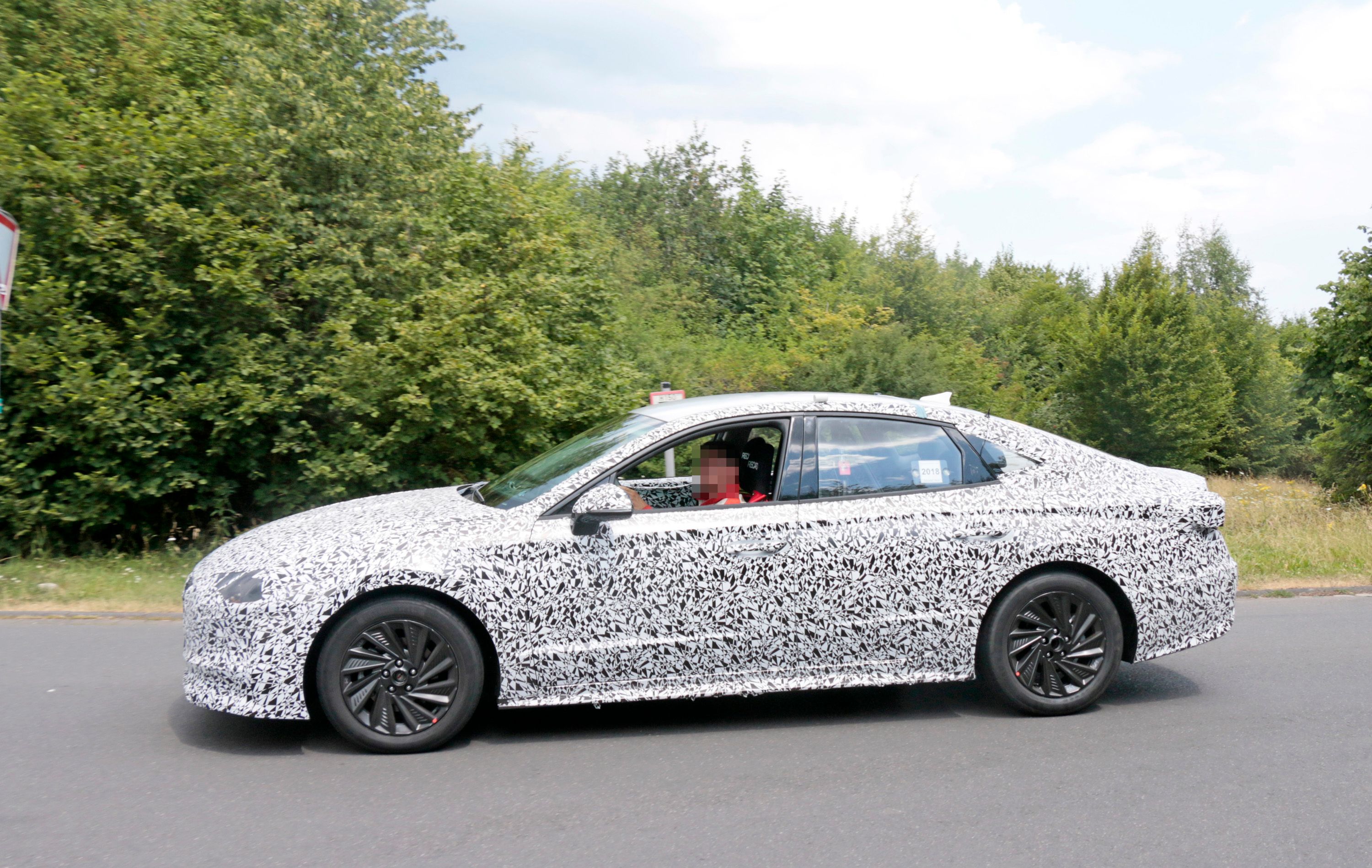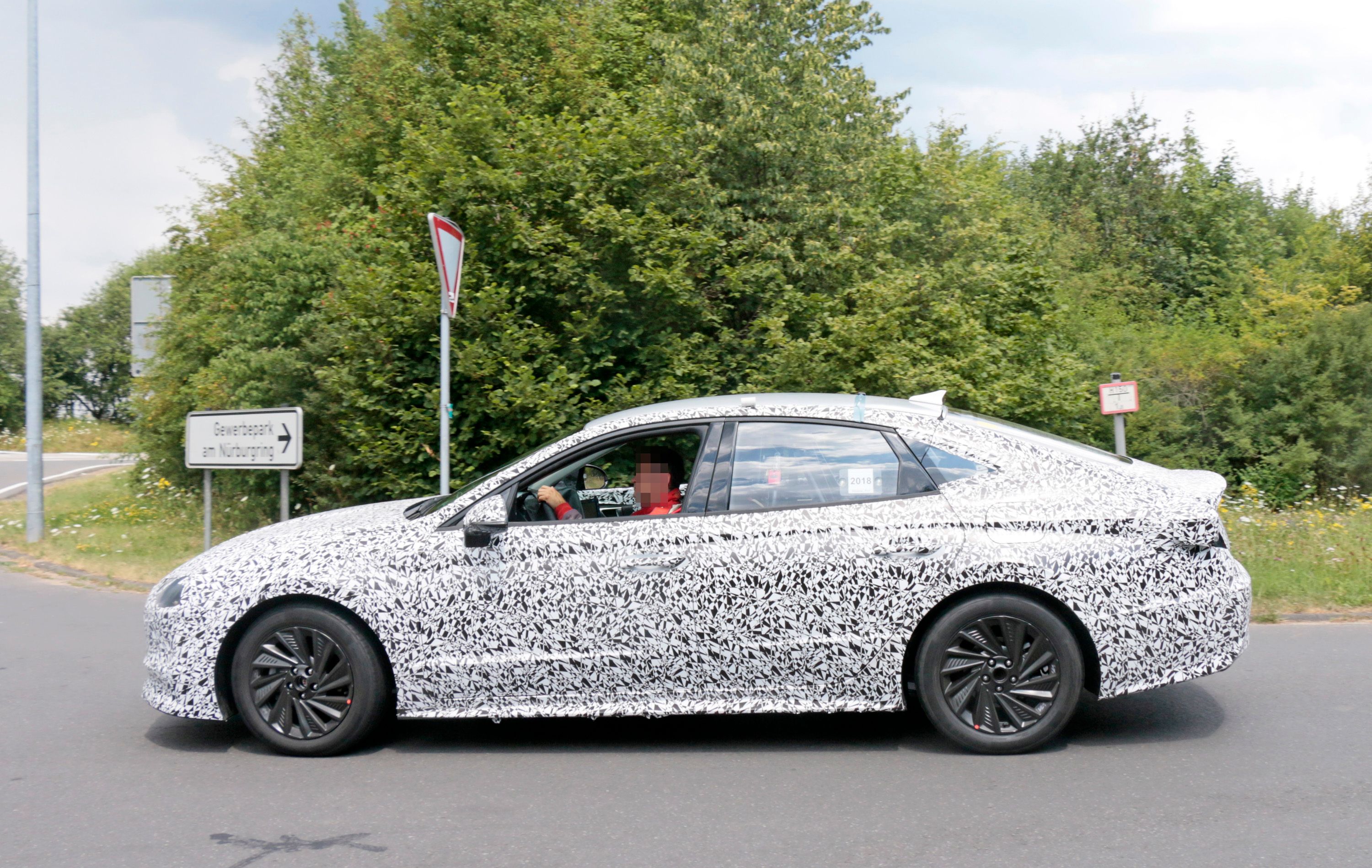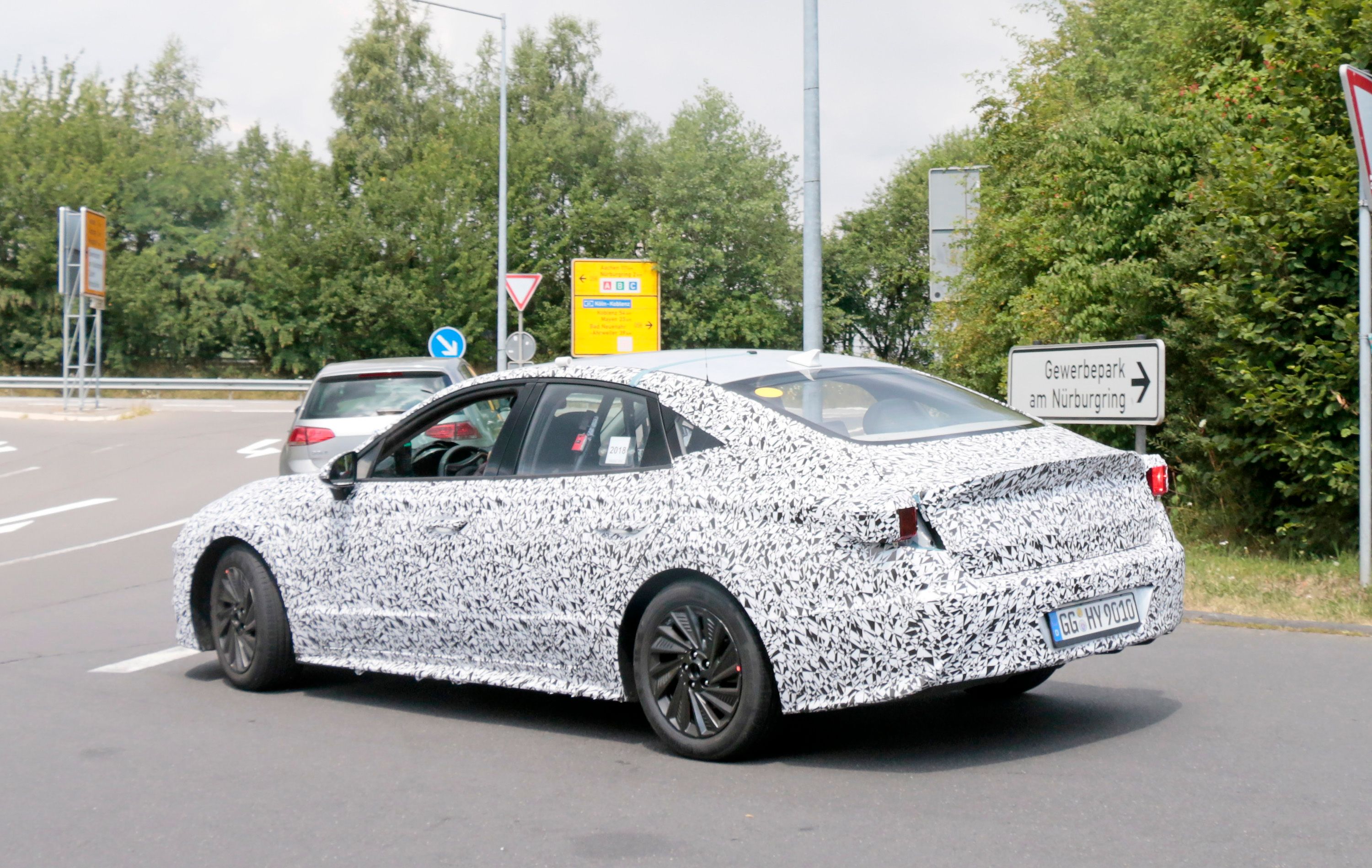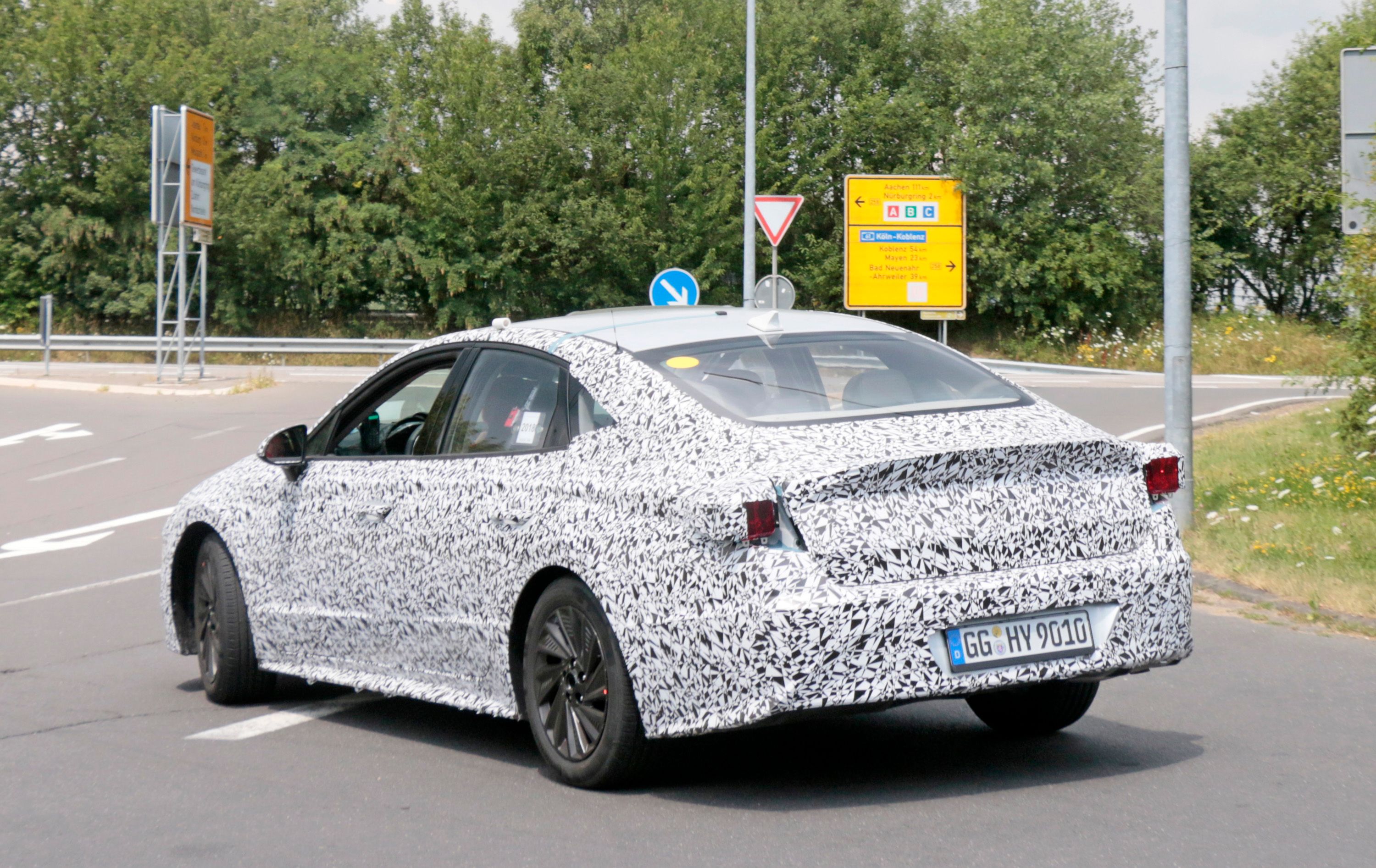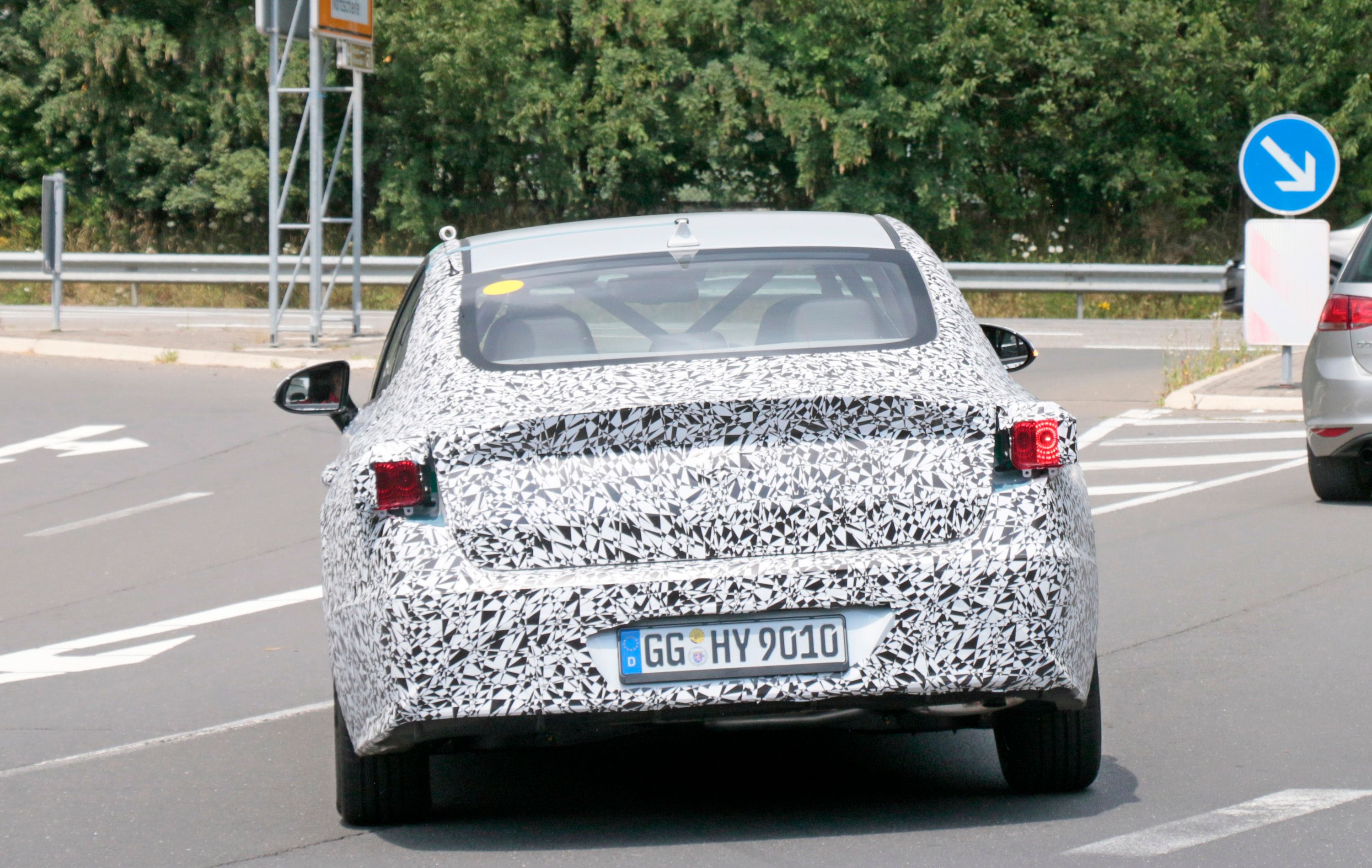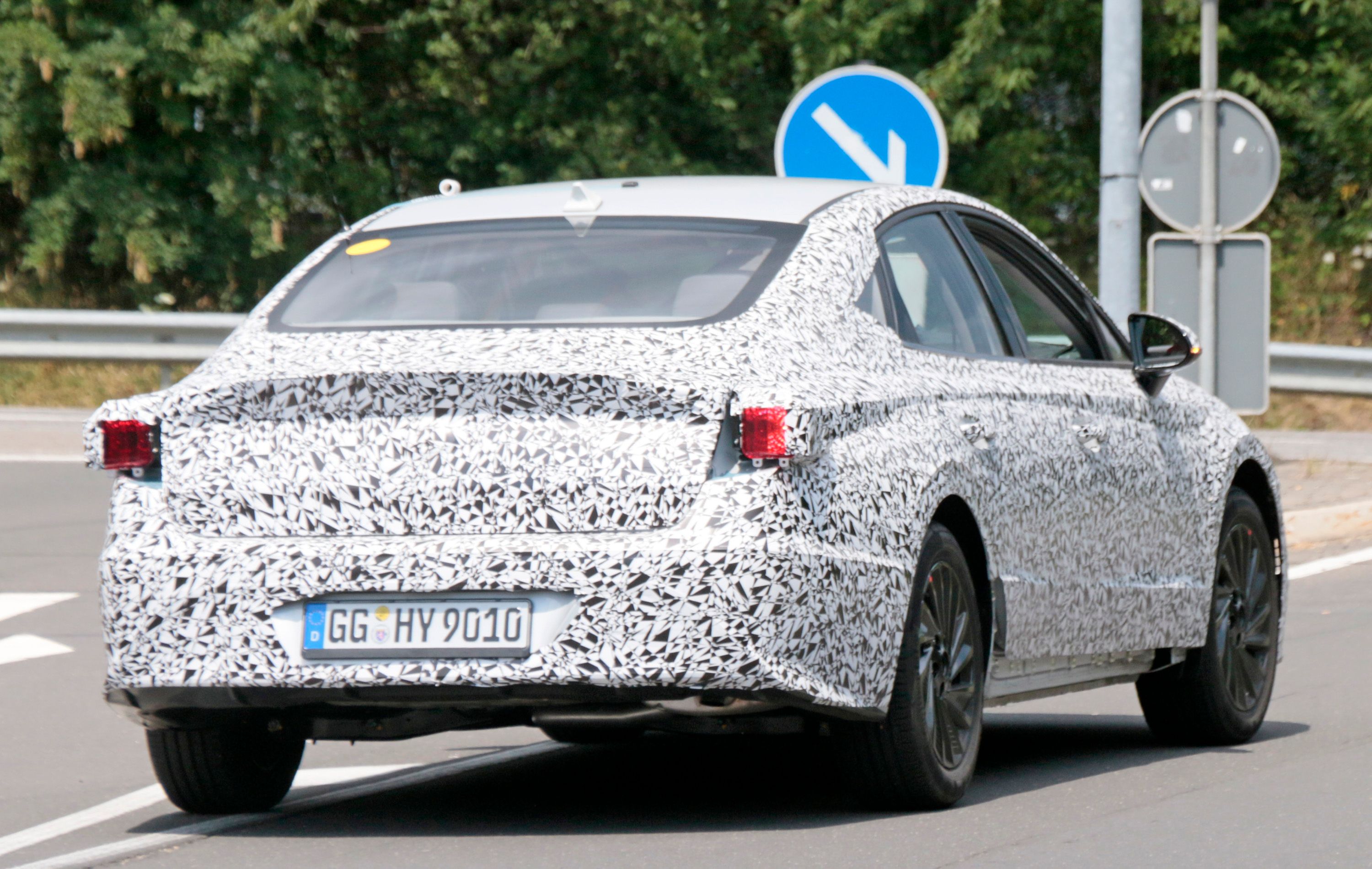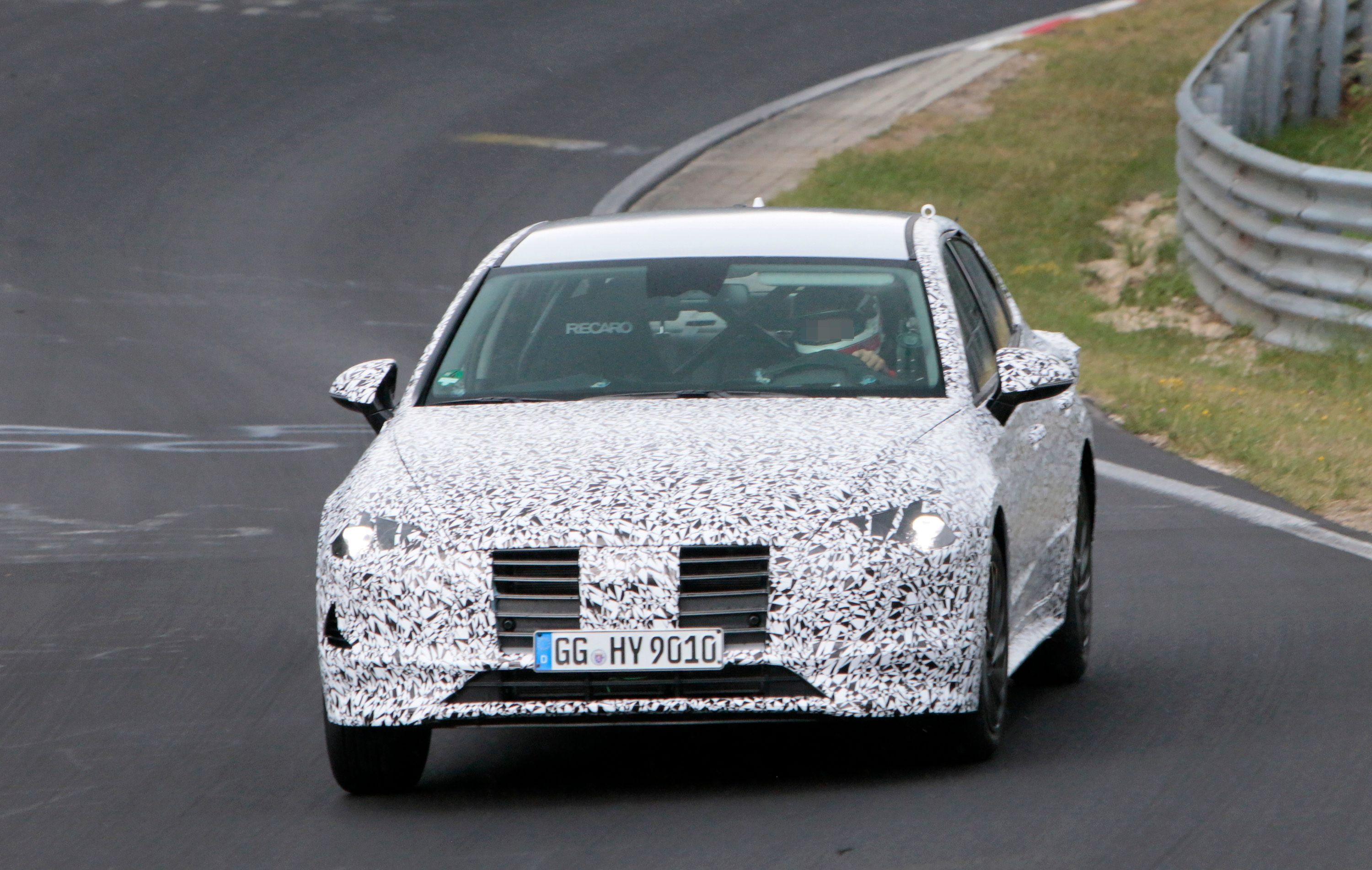The Hyundai i40 is the latest car to go around the Nurburgring in full camouflage gear. Naturally, it means that it’s also the latest car to be caught out testing ahead of what looks to be a 2019 debut. Hyundai’s mid-sized, Europe-facing sedan is ripe for an update, hence the sight of the swirly wrapped prototype making runs at the ‘Ring earlier this week. There’s not much to look at for now, but the spy photos do give us some ideas on what we can expect when the updated i40 starts losing its camo skin.
2019 Hyundai i40
- Make: Array
- Model: 2019 Hyundai i40
Exterior
Hyundai really took some liberties covering up the i40 test mule, didn’t it? There are some wraps that cover portions of a car. There are some wraps that cover half of the car. But then there’s the i40, which is covered pretty much from head to toe in all that camo.
It’s hard to make out exactly what we’re looking at here with the whole body covered in wraps. The good news is that we know it’s a sedan, at least judging by the shape of the profile. Look at it in certain angles, and there are some fastback hints to it, too. I’m not complaining in that regard because I’ve always been a fan of those sleek beauties.
We also get to see parts of the front grille, which feature thin horizontal bars. I’m guessing those bars are just placeholders for now because they look rather dull if they end up on the production model. The headlights peek out a little bit, but not enough to really identify their shape. They do look to be different from past prototypes we’ve seen, including the i40 wagon that was spotted doing its own test runs a month ago.
It’s the same story at the back with the taillights. They even appear to be surrounded by an odd-looking component that protrudes out from the rear quarter panel. I don’t know if that’s going to be part of the final production package, but if it did, it’s probably not going to go over well with fans of the i40. My best guess is it’s some kind of testing component for the taillights. Other than these few elements, the i40 is as heavily covered as any test mule we’ve seen this year. I will say that those body lines look pretty sexy. Here’s to hoping they make it to the production model, too.
Interior
Note: Hyundai i30 pictured here.
As expected, there are no photos of the i40’s interior. With the lack of any meaningful hints, I believe that we’re not going to see a dramatically different interior from what we saw from the recently released i30. I get it that both models technically don’t belong in the same segment, but they’re close enough to justify a few design similarities in the cabin.
The most likely change in the cabin of the updated i40 would be its layout. That’s going to be one of the most important things Hyundai needs to address because the vertical layout from the current model is completely outdated. Instead, I expect the new i40 to get a more modern, horizontally oriented layout similar to what the new i30 has. Hyundai could switch things up a little bit, but the expectation is that we’ll see a center console touchscreen located high on the dashboard. A number of infotainment controls should make up its surroundings, designed to look slimmer and sleeker to maximize its modern looks.
Seating configuration should remain the same, though I am not opposed to the i40 getting new seats. The old ones were a little too stiff and uncomfortable. Softer and more ergonomic seats would go a long way in creating the kind of premium cocoon that’s going to attract a lot of customers.
There should — and will — be more details on this front, but until we get a good look at the new i40’s cabin, all of this is a matter of speculation, albeit well-founded ones.
Drivetrain
Since we’re not expecting the new i40 to be a next-gen model, it should retain its current lineup of engines. These engines could get updates, too. That’s par for the course as far as mid-cycle refreshes are concerned.
In any event, look for the i40 to receive a variety of engine options, including a collection of turbocharged gas engines and their diesel counterparts. The current engine range has plenty to offer, including a1.6-liter four-cylinder gas engine that produces 133 horsepower. There’s also a 2.0-liter four-cylinder that churns out either 164 horsepower or 150 horsepower, and a high-spec 2.0-liter gas engine that can drop either 176 horsepower or 162 horsepower.
On the diesel front, there’s a 1.7-liter four-cylinder engine that has three different power outputs: 113 horsepower, 137 horsepower, and 139 horsepower.
If anything, we can expect bumps in output from these engines for the new i40. It’s also possible that hybrids or hybrid plug-ins could enter the fold, possibly replacing some of the gas and diesel units, and serve the role as top-of-the-line units.
Two transmission options are likely to be included, specifically a six-speed manual and a seven-speed twin-clutch automatic transmission. An eight-speed automatic has yet to be announced on the i40, but the 2018 Sonata already has it so there’s no reason why it’s Euro counterpart shouldn’t get it, either.
Prices
Pricing for the current Hyundai i40 starts at £20,140 ($26,300) for the base version. That figure can go up to as high as £28,020 ($36,650) for the top-of-the-line Blue Drive Premium version. Once the new model arrives, expect those prices to increase, possibly to around £22,000 ($28,800) for the entry-level unit all the way up to about £30,000 ($39,300) for the range-topper.
Competition
Volkswagen Passat
Just like the Hyundai i40, the Volkswagen Passat is close to getting updated. Spy shots of the test mule were spotted on the road last month, and the model is expected to arrive in time for the 2019 model year. The updated Passat is getting a number of notable updates, some of which are being lifted from the new Arteon. Given the Arteon’s good looks, I’d say that’s a positive thing. Beyond the visual changes, the new Passat is also getting a suite of engine options, including gas, diesel, and hybrid powertrains. Most of the output is unlikely to change, but there could be a few surprises along the way. Either way, expect the new Passat to carry power in the range of 118 horsepower to over 300 horsepower. Pricing for the Volkswagen Passat typically starts at around $36,000 and goes the way up to $41,000. Expect bumps in those price tags for the updated model because that’s standard practice in the auto industry.
Read our full review on the 2018 Volkswagen Passat
Kia Optima
They may come from the same family tree, but make no mistake about it, the Kia Optima is a competitor to the Hyundai i40. Unlike the i40, though, the Optima is only two years removed from the current-generation, so there are no facelifts or updates involved here. That’s not necessarily a bad thing because the Optima has been a popular model for Kia. It has a modern look that’s up to the times. It has a well-curated interior. Most importantly, it has an array of engine options, including a 1.7-liter diesel unit that produces 140 horsepower and a bigger 2.0-liter four-cylinder engine that can play around with 160 horses. Kia has made huge strides in the European market with the Optima, and it doesn’t look like the sedan’s momentum is going to slow down anytime soon. That’s going to be a big challenge for the i40, especially when you consider that it essentially has to compete against family. In any case, the current Optima is priced at around $29,5000 to $45,000 depending on the trim level.
Read our full review on the 2018 Kia Optima
Conclusion
The Hyundai i40 is finally getting an update. That’s the good news. The bad news is that even with its much needed redux, the i40 still belongs in a segment that includes the Volkswagen Passat, Kia Optima, and Ford Mondeo. In other words, it needs to be at its absolute best if it wants to make a name for itself. Fortunately, those of us who have driven or owned an i40 will attest that the sedan has a definite charm to it. Since its arrival in 2012, the i40 has become a staple in Hyundai’s sedan lineup in Europe. We don’t get here in the U.S. because we already have the Sonata, but everywhere else, the i40 is a popular model. That kind of cache is what Hyundai is looking for with the updated model. It’s too early to make any judgments on its presentation and capabilities, but if the new model is as good as the one it’s replacing, the i40’s going to be in a good place moving forward.
Further reading
Read our full review on the 2017 Hyundai i30.
Read our full speculative review on the 2019 Hyundai i40 Wagon.
Read more Hyundai news.

